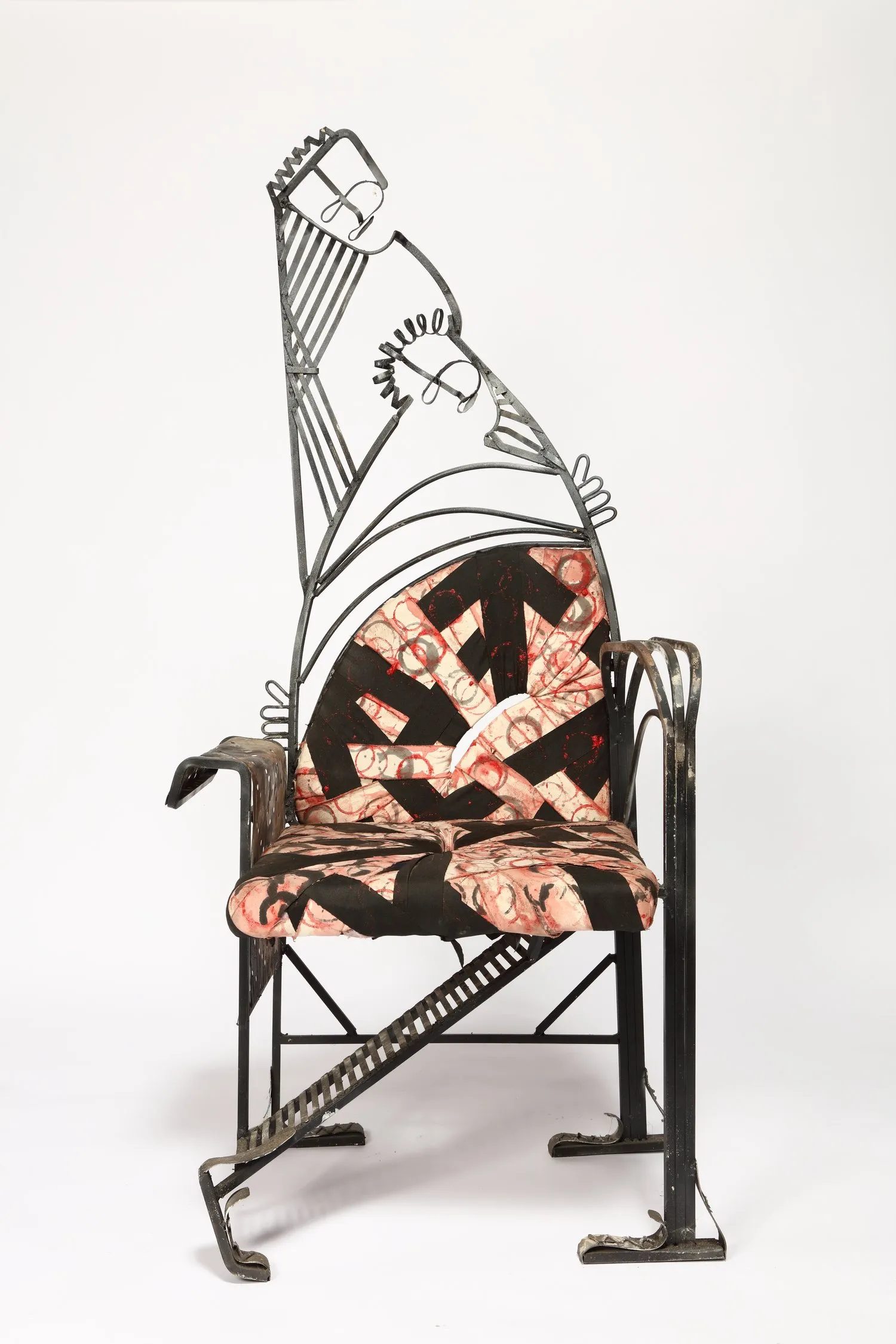
Richard Dial: Everyday Love
Institute 193
215 North Limestone, Lexington, Kentucky 40507
6:00pm - 8:00pm EST
11:00am - 6:00pm EDT
Institute 193 is pleased to announce Everyday Love, a solo exhibition of the work of Bessemer, Alabama-based artist Richard Dial. The culmination of an artistic career spanning well over 30 years, this will be Dial’s first solo exhibition.
An artist capable of so thoroughly invoking the all-encompassing emotionality of experiences like holding a child, grazing the hand of a new lover, or luxuriating in bed on your one day off work is a rare thing already. Rarer still is one who can structure that intensity through the form of an object which has become so culturally banal, and in the process imply that every such unconsidered object could become the vessel of a powerful emotional richness. Using the wreckage of the same industrial system implicated in both the contemporary landscape of bland material culture and in the subjugation of Black lives throughout the history of this country, Richard Dial stretches, bends, and modulates an instantly recognizable object until it is capable of carrying the wild intensity of life’s everyday intimacies.
In 1984, amidst the closure of the Pullman Standard Company factory where he worked for much of his life, Richard Dial and his brother Dan established Dial Metal Patterns with the support of their father, Thornton Dial. The family business was designed to take advantage of the collapse of the industrial economy that had long structured their home of Bessemer, Alabama, as well as the subsequent boom in availability of skilled labor. A sustained engagement with furniture-making through the company’s “Shade Tree Comfort” line of patio furniture led Richard to begin making chairs as art objects, using both his mastery of metalworking techniques and an inventive, socially-engaged artistic vision to explore the possibilities of re-animating an object blunted by globalized industrial production.
An initial flurry of work in the late 1980s contributed to Dial’s early recognition, after which he shifted his focus back to the family business, leaving little time for artistic pursuits. When business died down, a second wave of creative activity in the mid-2000s prefigured his recent inclusion in major museum shows in New York, Houston, and Toledo, Ohio. Shortly after, Dial put his artistic production on hold once more as caring for his aging father took precedence. In recent years, he has resumed making work, creating the series presented here: a reflection on the long process of caring for his parents and other deeply intimate family experiences, placing everyday concerns about love, friendship, and labor on their properly spiritual plane.
Much critical work on Dial and his fellow travelers in the Southern “self-taught” art landscape has focused on the transmutations of traditional African forms and motifs over the course of the Atlantic slave trade and its aftermath––hundreds of years of slavery, dispossession, and oppression––during which Dial and his ancestors participated in the construction of the American economic empire while being violently excluded from the vast majority of its spoils. African craft workers often used objects as containers or vehicles for the housing of specific spiritual forces, be they elemental, animistic, or ancestral. In many cases, the role these objects played as carriers of spiritual or socio-political importance was overlaid upon them as an aspect of their use value, not something that sequestered them into a strictly religious or intellectual realm separate from the quotidian.
Thus, while laudable on their own as pieces of contemporary sculpture, it's vital to keep sight of the chair form as a non-negotiable throughline in Richard’s artistic work. Despite clear shared concerns and techniques with his father and brother, who also created large-scale metal sculptures incorporating the excess of industrial materials surrounding their home, it is Richard’s work which relentlessly weaves together the fine lines that divide the furnishing, an object of use, from the artwork, an object of contemplation. Alongside the specific concerns of each piece, his attachment to this form functions as a rebuke of the slow dis-enchantment of objects like the chair, the likes of which we cannot help but build an intimate, multivalenced relationship with over the course of our lives.
Intensity of experience can be difficult, and Richard’s chairs don’t shy away from this. Like the lives of our friends, neighbors, and loved ones, they are wrenched into improbable shapes. Their feet, often literalized as the feet of the figures depicted in each chair, splay out at strange angles. Symmetry is avoided at all costs, which Dial often calls attention to by drastically offsetting the height of the chair’s arms. The upholstery, a relatively new feature predominant in his recent works, is treated with paint until it resembles a quilt left in the woods, digested by moss or mold. And finally, there are the figures, deftly executed line drawings in metal worked into the backs of the chairs. While enmeshed in the flayed, patinaed metal of the chair, they are serene, fully occupied with devotion, rest, solidarity, or deliberation. Buffeted by the severity of raw life, through hard-won skills and the depth of love, they possess grace.